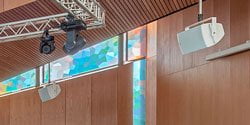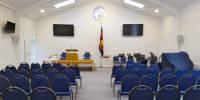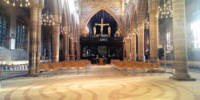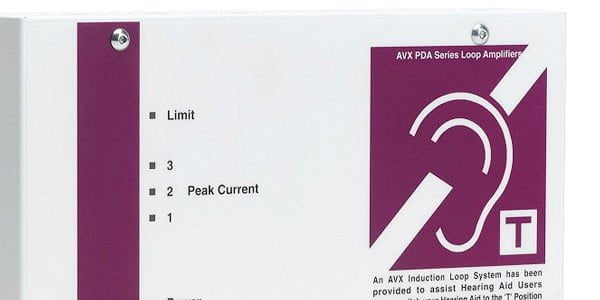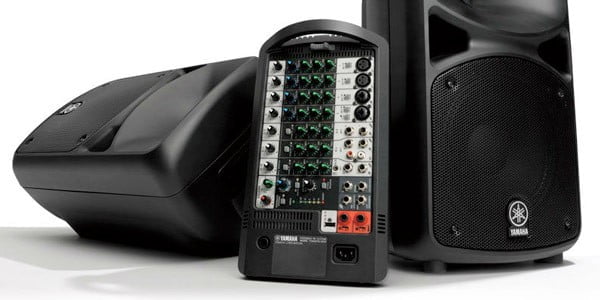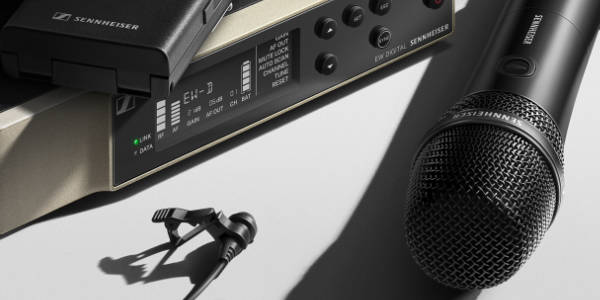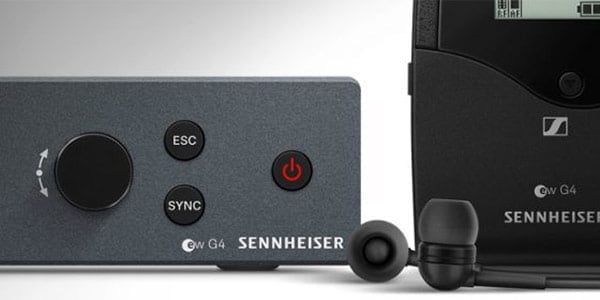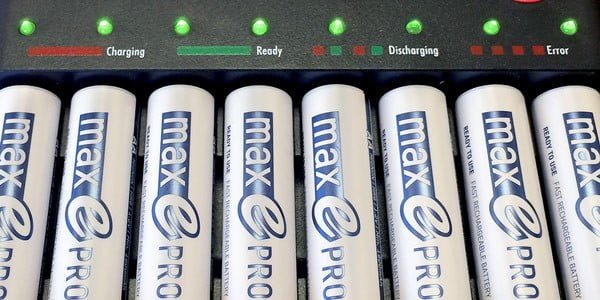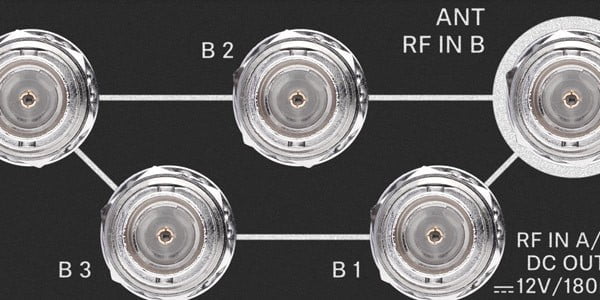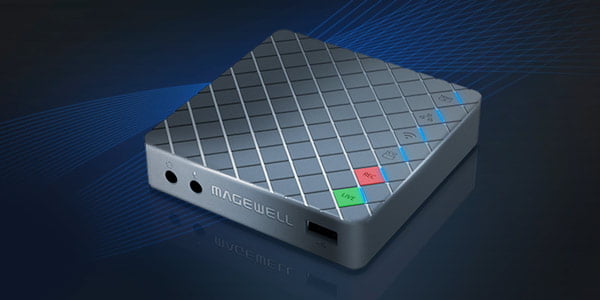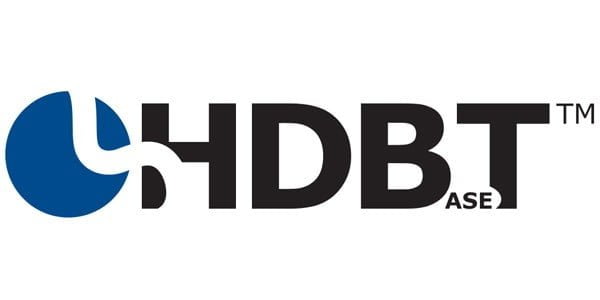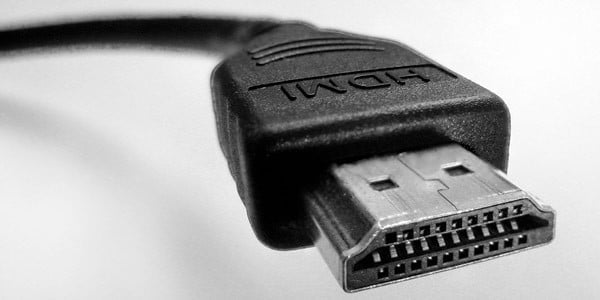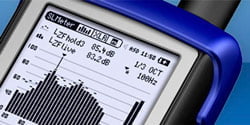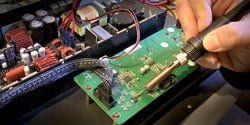Basic explanations of key terms…
Acoustic: Often used to describe an un-amplified instrument, i.e. an 'acoustic guitar'. It can also relate to the properties of the ambient sound in a room or space, i.e. 'the church has good acoustics'.
Active DI: A device that permits the Direct Injection of signals from guitars, etc. into a mixing console.
Ambience: The characteristic sound of a location that tells the listener where he/she is i.e. concert hall, stadium, etc. The ambience is a function of the reverberation of sound.
Amplifier: A device that increases the level of an electrical signal.
Amplitude: Signal level, measured usually in Volts.
Attenuate: To decrease the level of a signal.
Auxiliary Send: An output bus which can receive inputs from each mix channel and send it to an effects processor. Auxiliary sends can also be used as additional output mixes for monitors, recording, etc. Each mix channel will have a separate level control for each aux send.
AV: Audio Visual
ANSI Lumens: A measure of brightness from a projector.
Balanced: A method of audio connection that ‘balances’ the signal between two wires and a screen that carries no signal. Balanced signal cables usual eliminate all radio interference.
Bandwidth: the range of frequencies covered by a driver or a network (crossover).
Boost/Cut Control: A single EQ control which allows the range of frequencies passing through its filter to be either amplified or attenuated.
Bus: A defined set of conductors along which signals may travel. A mixer has several busses carrying the stereo mix, the groups, the PFL, signal, the aux sends, etc.
Cable: Any length of stranded wire. Electrical cable generally consists of multiple stranded copper wire conductors insulated with a rubber or plastic sheath. Electrical cable comes in various sizes of wire and varying numbers of conductors depending on the purpose. Speaker cable is usually two conductors. Microphone cable is typically three conductors (balanced) with a shield.
Cardioid Pattern: The ‘heart-shaped’ polar response of a microphone meaning that most of the sound is picked up from the front, Mainly used for stage vocals or in any situation where sound has to be picked up from a concentrated area.
Channel: A strip of controls in a mixing console relating to a single mono input or stereo input.
Chorus: An effect created by doubling the level of a signal and adding delay and pitch modulation.
Condenser Microphone: A type of microphone which picks up sound via a thin flexible diaphragm placed in proximity to a metal plate. They are very sensitive, especially to distant sounds and high frequencies.
Compressor: A device designed to control or reduce the dynamic range of an audio signal.
dB (Decibel): The standard measure of loudness. One decibel is equal to 1/10th of a Bel. The decibel is actually a ratio of two quantities on a logarithmic scale and can be applied to many audio system parameters.
Delay: An electronic circuit that delays the audio signal for some short period of time. Individual and multiple delays are used in reverbs and other effects units where they are mixed back in with the original signal to produce an effect. Delays are also used individually to compensate for differences in speaker placement relative to the sound source and the listener.
Diaphragm: The moving element of a microphone. The diaphragm converts the sound waves into mechanical motion.
DI Box: A device to allow instruments or other sound sources to be connected to a mixer using a balanced cable and at the right signal level.
Digital Delay: The creation of delay and echo effects in the digital domain. The premise being that, as digital signals are resistant to corruption, the process will not introduce additional noise or distortion.
Digital Reverb: Reverberation effects created as above.
Digital: The processing and storage of signals with sound information represented in a series of 1’s and 0’s, or binary digits.
Direct Injection: The process of connecting an instrument or other sound source to a mixer without using a microphone.
Direct Output: A pre-/post-fade, post EQ line level output from the input channel, bypassing the summing amplifiers, typically for sending to individual tape tracks during recording.
Distortion: A measure of the difference in shape between the wave form into an electronic circuit and the resulting output wave.
Diversity: A type of wireless microphone receiver that uses two antennas. The signal coming from each antenna is compared and the stronger signal is used.
Dynamics: The amount of fluctuation in level of an audio signal.
Dynamic Range: The range in decibels between the quietest and loudest sounds in the audible range that audio equipment will reproduce.
Effects: The use of devices to alter or process a sound e.g. reverb etc
Effects Return: Additional mixer input designed to accommodate the output from an effects unit.
EQ: Abbreviation of Equaliser or Equalisation.
Equaliser: A device that allows the boosting or cutting of selected bands of frequencies in the signal path.
Fader: A linear control providing level adjustment. Favoured by professionals due to smoothness of activation and the ability to give an instant visual indication of status.
Feedback: The squeal, ringing or rumble caused by the sound from the loudspeakers reaching the microphones and travelling back through the system over an over at a resonant frequency. The frequency of any feedback is determined by the characteristics of the room and the equipment.
Foldback: A feed sent back to the artist via loudspeakers or headphones to enable them to monitor the sounds they are producing.
Frequency: The number of times an event repeats itself in a given period. Frequency is measured in Hertz (Hz). One Hertz is one cycle per second.
Gain: The factor of how much the level of signal is increased or amplified, normally expressed in decibels.
High Pass Filter: A filter that rejects low frequencies below a set frequency, typically 100 Hz.
Hyper-cardioid Microphone: A directional microphone with greater side attenuation than a cardioid microphone but less rear attenuation.
Impedance: The AC resistance in an electrical circuit. Impedance is the combination of DC resistance and AC capacitance and inductance measured in ohms. Impedance can’t be measured by a DC ohmmeter.
LCD: Liquid Crystal Display. A screen that displays information on an electronic device.
LED: Light emitting diode. A bright semi-conductor component often used in equipment display panels.
Matrix: Additional auxiliary outputs found on larger mixing desks.
Midband: The range of frequencies to which the human ear is most sensitive.
MIDI: Musical Instrument Digital Interface.
Monitor: A speaker or headphones used by the performers to hear themselves.
Mono: Sound coming from one source (signal). Multiple speakers that have the same input are mono regardless of their number or placement. A better definition might be not stereo. Monaural sound does not contain any inherent directional information.
Multicore: A cable with multiple cores allowing signals to be carried independently but within the same physical outer casing.
Ohm: a unit of electrical resistance or impedance.
Oscillator: A tone generator for test and line-up purposes.
Parametric EQ: A graphic equaliser in which the cut/boost, frequency and bandwidth are all adjustable.
PFL: Pre-Fade-Listen – A function that allows the operator to monitor the pre-fader signal in a channel before it reaches the main mix.
Phantom Power: The +48v DC voltage applied equally to the signal pins of a balanced microphone input to provide powering for condenser microphones.
Polyphony: the number of notes that can sound similtaneously on a keyboard.
Post-Fade: The point in the signal path after the channel or master fader and therefore affected by fader position.
Powered Speaker: A speaker that does not require an additional amplifier. ie it has a built-in amp. A great choice for portable PA systems and foldback monitors.
Pre-Fade: The point in the signal path before the monitor or master position and therefore unaffected by the fader setting.
PSU: Power Supply Unit
Reverberations: Acoustic ambience created by multiple reflections in a confined space. A diffuse, continuous decay of sound. Stereo: Two channel system feeding left and right speakers to create the illusion of a continuous sound field.
Subwoofer: A specific type of speaker dedicated to reproducing very low frequency sound.
SVGA: SVGA is the measurement of pixels in density of an image expressed in horizontal dots and vertical dots. SVGA is 800 x 600 resolution. This represents 800 pixels horizontally by 600 pixels vertically. The higher the resolution, or density, enables the greater detail of the display
Talkback: A system allowing the operator to speak to the artists or to tape via the auxiliary or group outputs
Tape Return: A line level input provided specifically to receive the playback output of a tape machine.
Transient: An instantaneous rise in the sound level e.g. a cymbal crash or similar.
U: The standard measurement of racks and cases. About 4.4cm
UHF: Ultra high frequency waves that can be used to transmit information. Commonly used on radio microphones
Unbalanced: A method of audio connection which uses a single signal wire and cable screen as the single return. This method does not create the same degree of noise immunity as a balanced connection.
Unpowered Speaker: A speaker that needs an additional amplifier before it produces a sound.
VHF: Very High Frequency wave that can be used to transmit information. Commonly used on radio microphones.
Watt: a unit of electrical power. A watt of electrical power is the use of one joule of energy per second. Watts of electrical power equals volts times amperes. NB. Watts does not equate to loudness!
Woofer: A loudspeaker dedicated to producing low frequency sound.
XGA: XGA is the measurement of pixels in density of an image expressed in horizontal dots and vertical dots. XGA is 1024 x 768 resolution. This represents 1024 pixels horizontally by 768 pixels vertically. The higher the resolution, or density, enables the greater detail of the display. XGA resolution is the standard for most church projection systems.
XLR: A 3 prong connector commonly found on microphones, mixers and amplifiers. Sometimes referred to as a cannon connector.



